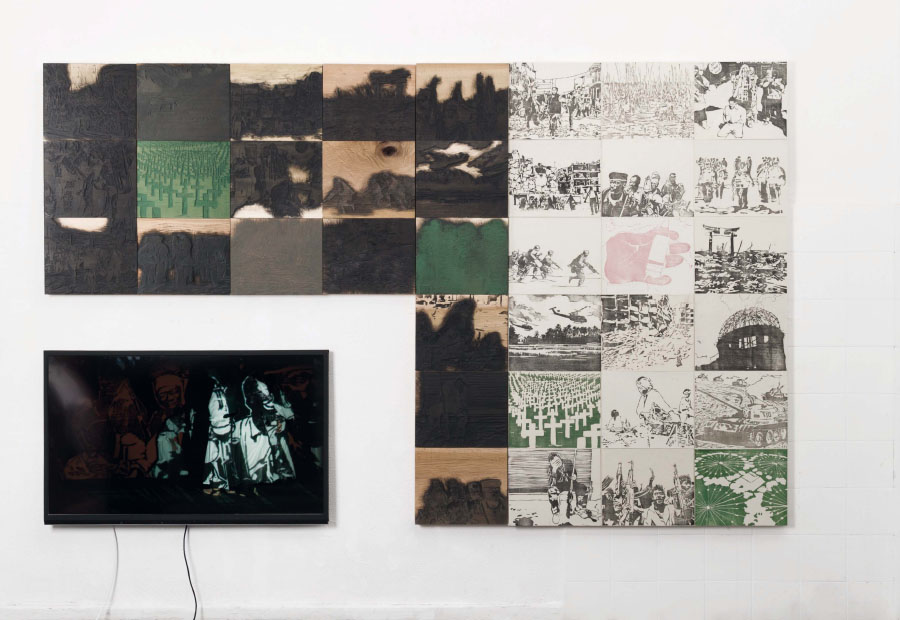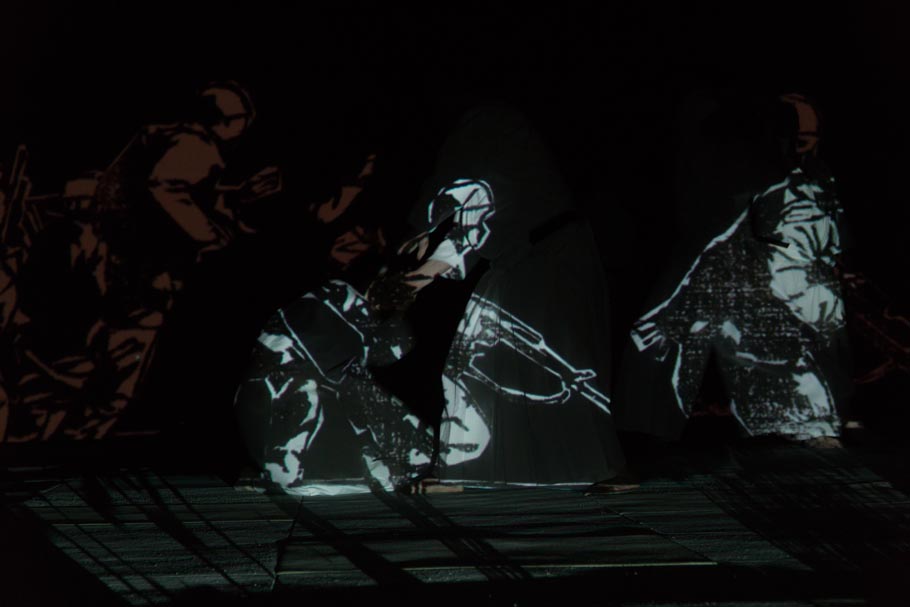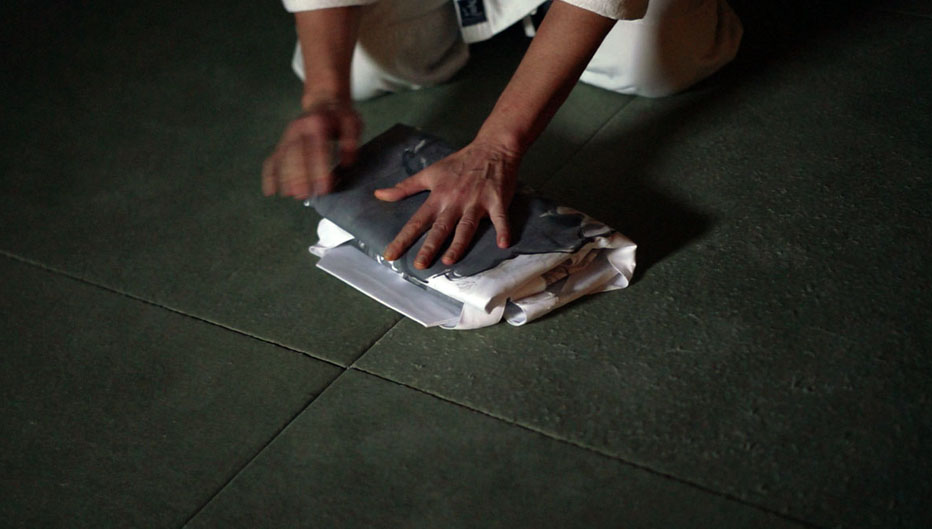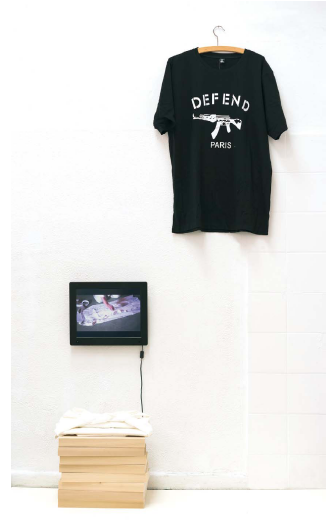Katas, seit 2018
Installation
variable Größe, hier: 240 x 175 cm
Gouache, Tusche und Wasserfarbe auf Holz und Washi,
Monitor mit Performance-Video


Katas I
Performance/Video (in Arbeit)
2017/2018
Foto: B. Janeck

Katas II
Performance/Video
2018

"Katas" is a performance of a group of martial artists, who show practice forms (katas) after announcement. On the white skirts (Hakamas) of the practitioners takes a projection of film sequences. The projected images show woodcuts depicting various modern military conflicts and their consequences.
The practice of aikido practitioners is in stark contrast to the war scenes projected on their clothing. Despite the contrast - and the intention to produce this contrast - no clear derivations or even answers can be developed from it. Rather, it is about a mental-philosophical confrontation with aspects of the field of struggle, self-defense and war.
Aikido was developed as a martial art that is not about destroying the opponent. Through years of repetition, Aikido practitioners practice dealing with external attacks and inner trouble spots.
Although we live in an environment where there is no war, we are confronted daily with images of armed conflict and global conflict. Like the projection on the practitioners' garments, this external threat is present in supposedly peaceful times, but it does not significantly affect our daily actions.
In every war, the annihilation of the enemy is accepted, as well as the greatest possible damage and weakening of the opponent is not only a necessary evil, but a declared goal for the realization of their own interests. Modern warfare has instruments of mass destruction that can fundamentally eradicate all humanity. The alleged defeat of the war opponent becomes an absurdity. The attempt to enforce one's own interests through war carries with it the risk of self-annihilation and the destruction of the cause of war (values, countries, resources). Although the mutual threat often turns like a spiral towards hopelessness, a dangerous escalation is often continued for economic and territorial reasons.